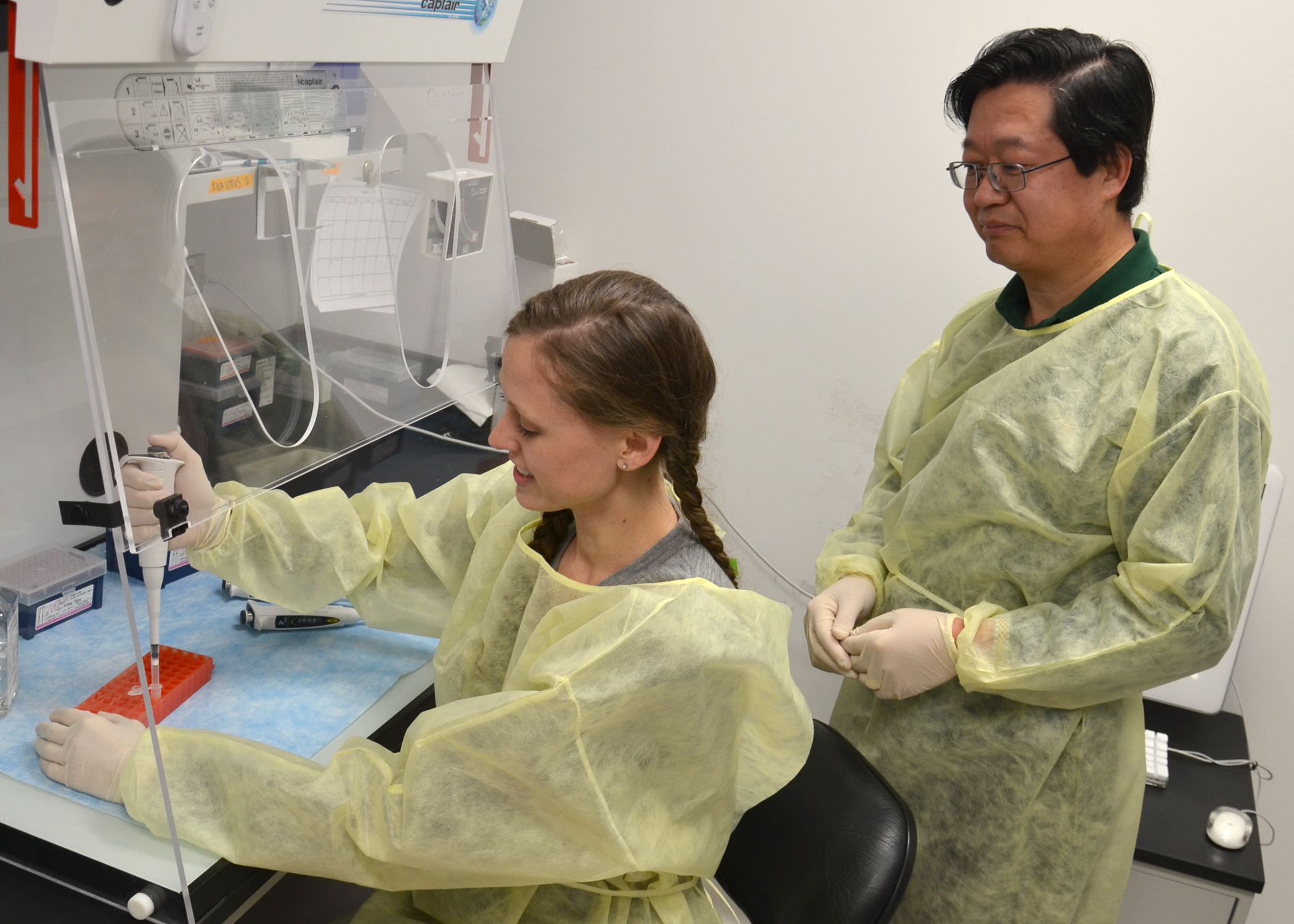Veterinary college's X.J. Meng awarded nearly $2 million to study chronic hepatitis E

For individuals with compromised immune systems, chronic infections can be deadly. Thanks to a nearly $2 million grant, a professor in the Virginia-Maryland Regional College of Veterinary Medicine will be working to better understand chronic hepatitis E virus infections.
Dr. X.J. Meng, professor of virology on the college’s Virginia Tech campus, received the five-year grant from the National Institutes of Health (NIH). He directs a lab in the Center for Molecular Medicine and Infectious Disease that is considered one of the world’s leading hepatitis E virus research centers.
Meng and his colleagues have spent years studying the hepatitis E virus and are now turning their attention to chronic cases of the virus which causes more than 20 million liver infections every year.
“Hepatitis E is generally considered an acute, self-limiting disease,” said Meng, who is in the Department of Biomedical Sciences and Pathobiology. “Patients with hepatitis E virus typically recover from the acute infection without going into chronicity, but in the last few years, there’s been a significant increase in the number of chronic infections among immunocompromised individuals, such as organ transplant recipients, HIV/AIDS patients, and leukemia and lymphoma patients.”
The project seeks to develop a chronic hepatitis E model to study how and why the disease progresses into chronicity and its possible medical prevention and treatment. Meng and his colleagues hypothesize that the impairment of certain host-immune responses is responsible for the progression of acute hepatitis E virus infection into a chronic infection in individuals with compromised immune systems. The co-investigators of this project include Dr. Tanya LeRoith, assistant professor of anatomic pathology; Dr. F. William Pierson, director of the Veterinary Teaching Hospital; and Lijuan Yuan, assistant professor of virology and immunology, all faculty at the veterinary college.
Although hepatitis E is more common in developing countries, cases have been reported in the United States and other industrialized countries. The mortality rate associated with hepatitis E virus infection in humans is usually less than 1 percent, but that number can reach as high as 28 percent in pregnant women who have been infected.
“Interestingly, nearly all of the chronic cases were caused by a genotype of hepatitis E virus known to be zoonotic,” said Meng, who explained that, in addition to humans, the zoonotic genotype of the virus has also been identified in pig, deer, rat, and rabbit. Meng and his colleagues are responsible for the discovery of swine hepatitis E virus in pigs, and avian hepatitis E virus in chickens.
Although the virus can be spread through contact with some animals or through contaminated water or food, it does not efficiently transfer from person to person. Symptoms may include jaundice, fever, abdominal pain, nausea, and loss of appetite. The virus has a long incubation period, and those infected may not show symptoms until two weeks to two months after exposure.
What’s more, Meng stressed the importance of food safety in preventing hepatitis E virus infections. In 2007, his research team found that 11 percent of pig livers sold in a grocery store in Blacksburg, Va., had hepatitis E virus contamination in them that could infect humans if served raw or undercooked. Sporadic and cluster cases of hepatitis E virus infection involving a variety of sausage in southern France confirms that cooking pork medium to rare does not kill the virus and could lead to foodborne infection.
Meng’s hepatitis E virus research program has been funded by NIH since 2000. This particular research project has successfully competed for renewal three times now.
Meng’s lab studies the molecular mechanisms of viral replication and pathogenesis and develops vaccines against emerging, reemerging, and zoonotic viral diseases. It invented the first U.S. Department of Agriculture fully-licensed commercial vaccine against the porcine circovirus type 2, which is currently being marketed worldwide.




